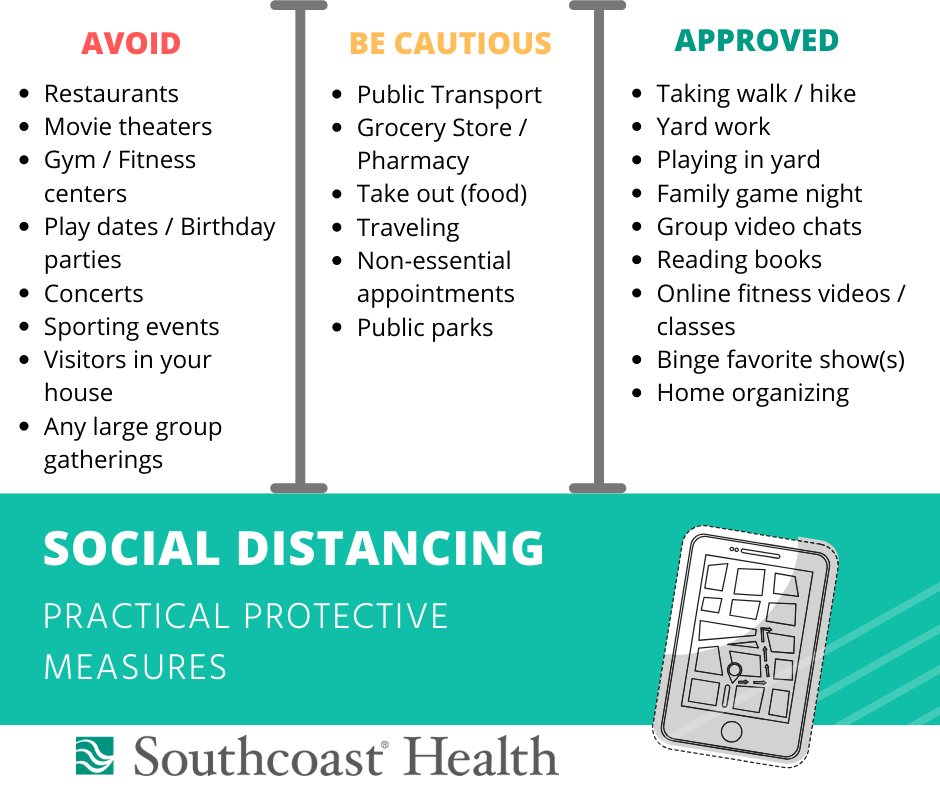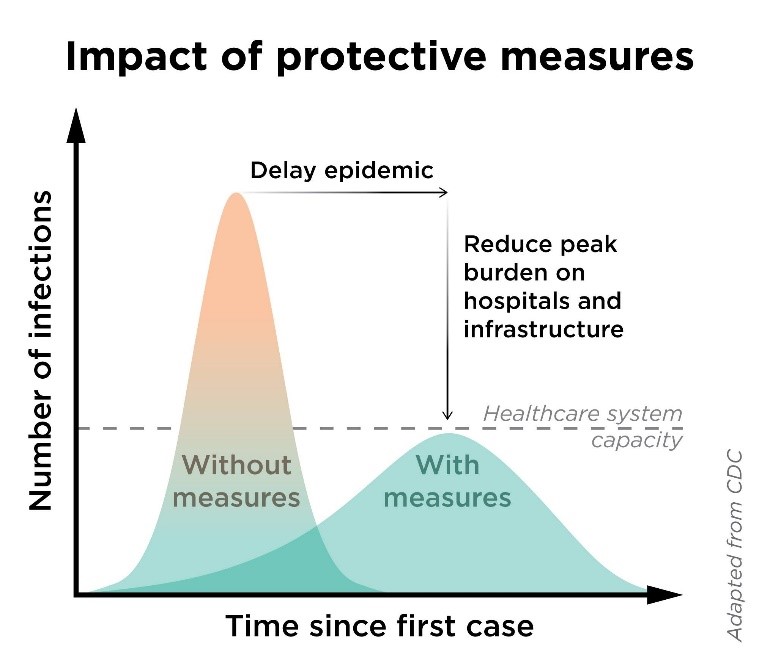Social Distancing – Practical Protective Measures


It may be hard to think about anything other than COVID-19 these days. It has put an abrupt end to many social gatherings in America and it’s in the news continually. Simply put, it seems to be the first thing on everyone’s minds. This social distancing is a practical protective measure to help slow further outbreaks of the COVID-19 virus.
In late December 2019, an unknown cause of pneumonia was reported to the World Health Organization of China. On March 11, 2020, The World Health Organization declared the coronavirus (COVID-19) outbreak a pandemic. From its emergence in China, COVID-19 swiftly spread across the world, leaving behind significant impacts both medically and economically. Currently, COVID-19 burdens America, threatening the health of its roughly 360 million residents.
In response, many Americans have taken steps in reducing person-to-person contact and social gatherings. One step in reducing close contact is social distancing. Social distancing is known as intentionally increasing the physical space between people. Social distancing becomes obvious as the virus is thought to spread mainly from person-to-person. More specifically, between people who are in close contact with one another, within about 6 feet. (Centers for Disease Control and Prevention, 2020) While the idea of social distancing may feel isolating for many, these measures are the best way to help interrupt or stop the spread of infection and to allow the health care system to readily and promptly care for patients.
The goal of social distancing is to ‘flatten the curve.’ Flattening the curve refers to using protective methods to slow the rate of the COVID-19 virus. Slowing the rate allows hospitals to have the capacity, supplies and medical-staff for all patients who need care. A high number of people becoming sick over several days could overwhelm a hospital or care facility. Too many people becoming severely ill with COVID-19 at the same time could result in a deficit of hospital beds, supplies or doctors.

- Group Gatherings
- Sleep Overs
- Playdates
- Concerts
- Theater Outings
- Athletic Events
- Crowded Retail Stores and Food-Establishments
- Workouts in Gyms
- Visitors to your House
- Working in the office
- Mass Transit Systems
- Any public place where you cannot stay six feet away from other people
Even if you are symptom-free and not part of an at-risk group, you still need to adjust your lifestyle starting today by participating in social distancing to help stop the spread of COVID-19.
We understand the pandemic may feel overwhelming at times, but everyone can help reduce the spread of COVID-19. By doing your part, you can make a big difference to your health and that of others around you.
We continue to focus on education and safety for all.
Thank you for trusting Southcoast Health with your care. Be well.

 Matt Guthrie
Matt Guthrie 